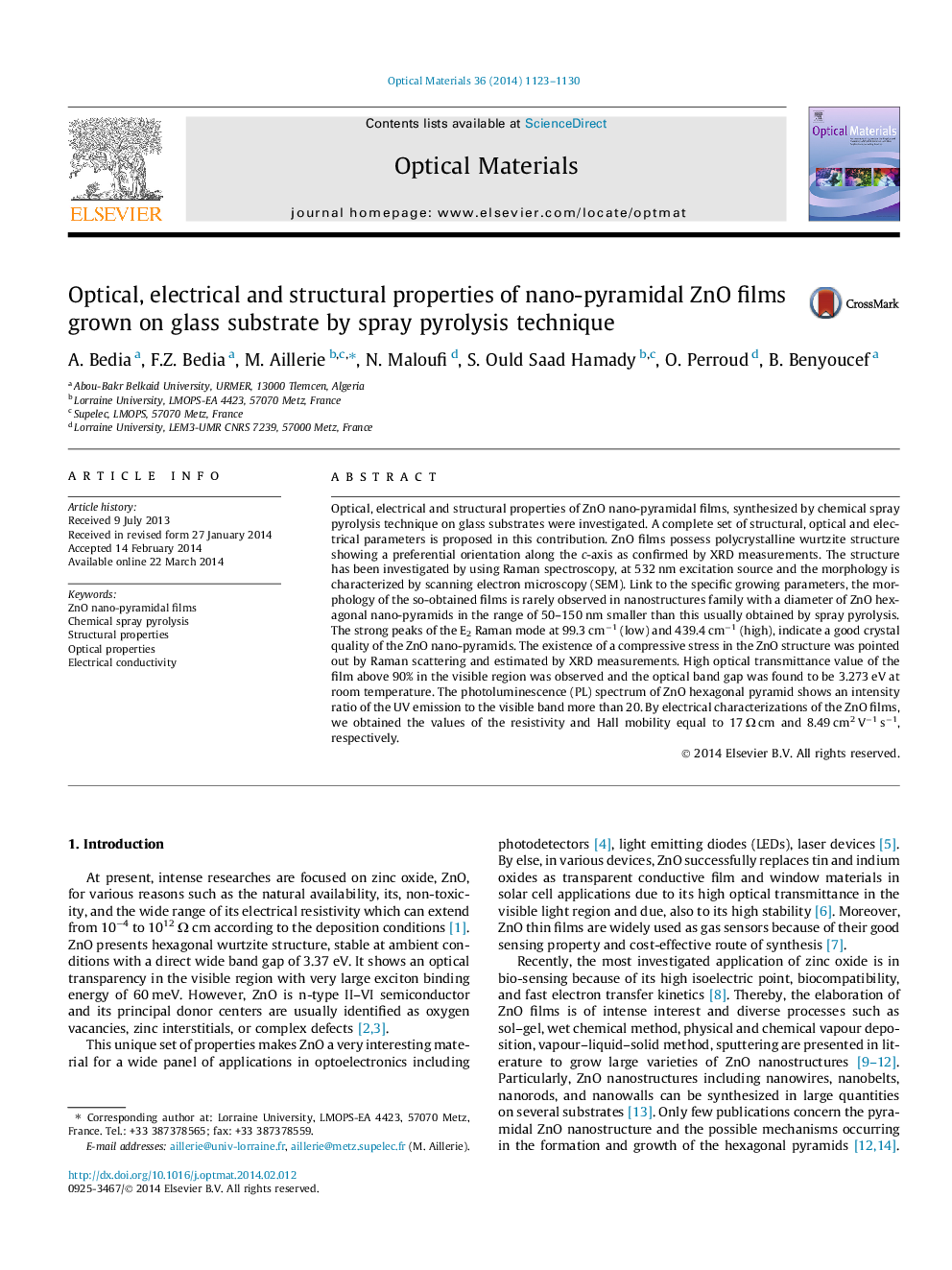| Article ID | Journal | Published Year | Pages | File Type |
|---|---|---|---|---|
| 1494322 | Optical Materials | 2014 | 8 Pages |
•Growth on glass substrate by spray pyrolysis technique of pure ZnO hexagonal nano-pyramidal film.•Investigation of structural, morphological, optical and electrical properties of ZnO film.•High optical transmittance and large optical band gap of the ZnO film.•Low resistivity and high Hall mobility of ZnO film.•Experimental characterizations point out high quality ZnO film interesting for optoelectronic applications.
Optical, electrical and structural properties of ZnO nano-pyramidal films, synthesized by chemical spray pyrolysis technique on glass substrates were investigated. A complete set of structural, optical and electrical parameters is proposed in this contribution. ZnO films possess polycrystalline wurtzite structure showing a preferential orientation along the c-axis as confirmed by XRD measurements. The structure has been investigated by using Raman spectroscopy, at 532 nm excitation source and the morphology is characterized by scanning electron microscopy (SEM). Link to the specific growing parameters, the morphology of the so-obtained films is rarely observed in nanostructures family with a diameter of ZnO hexagonal nano-pyramids in the range of 50–150 nm smaller than this usually obtained by spray pyrolysis. The strong peaks of the E2 Raman mode at 99.3 cm−1 (low) and 439.4 cm−1 (high), indicate a good crystal quality of the ZnO nano-pyramids. The existence of a compressive stress in the ZnO structure was pointed out by Raman scattering and estimated by XRD measurements. High optical transmittance value of the film above 90% in the visible region was observed and the optical band gap was found to be 3.273 eV at room temperature. The photoluminescence (PL) spectrum of ZnO hexagonal pyramid shows an intensity ratio of the UV emission to the visible band more than 20. By electrical characterizations of the ZnO films, we obtained the values of the resistivity and Hall mobility equal to 17 Ω cm and 8.49 cm2 V−1 s−1, respectively.
